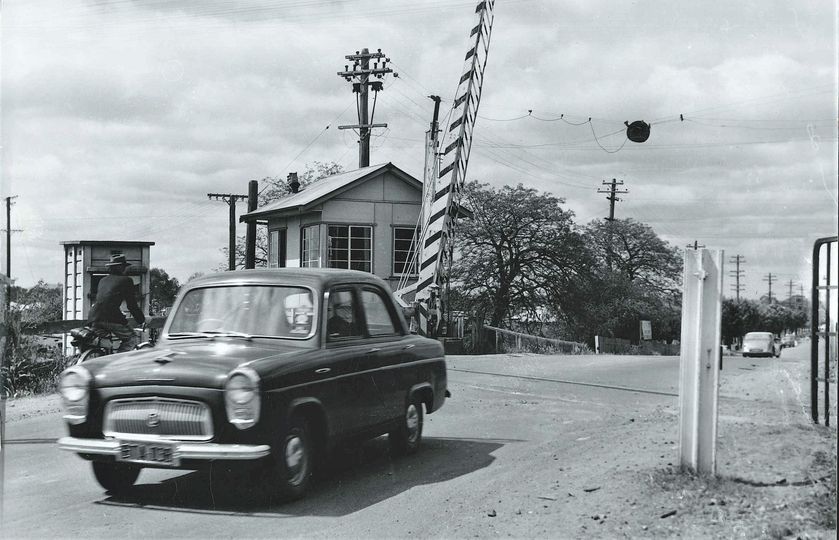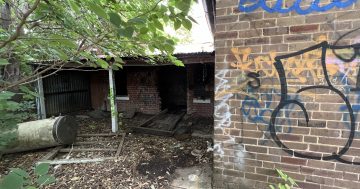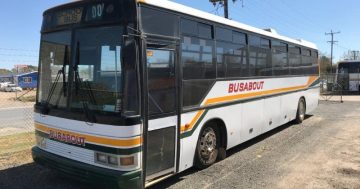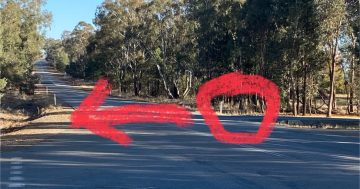
The electric boom gates that were installed in 1943. Photo: Museum of the Riverina collection.
As you drive along Lake Albert Road towards the Farmers Home Hotel (or indeed, away from it) have you ever wondered about the old railway tracks that run across the road?
Before the construction of the Edward Street underpass, trains crossed the road at the Tarcutta Road Level Crossing which came into service with the arrival of the first train into the South Wagga Wagga Railway Station on 1 September 1879.
This meant that vehicles and pedestrians travelled over the railway tracks instead of under them! By all accounts, due to the frequency of trains coming in and out of Wagga, such a level crossing was not ideal.
In January 1897, 20 years after the tracks first snaked their way across the road, the Hon. James Gormly, MLA was already endeavouring to induce the railway commissioners to construct a subway (underpass) to replace the Tarcutta Street crossing.
It wasn’t until 1911 that an application was made by the local station master for the instalment of even a lamp at the crossing.
Brought before council, the Wagga Wagga Express reported, “It is certainly a matter that should be granted without hesitation, and the work carried out without delay. In fact, every level crossing within the municipality should be furnished with a lamp, as the goods traffic is so active at Wagga that trains and shunting operations are carried on at all hours. The Tarcutta Street lamp is undoubtedly an urgent necessity.”
But why this urgency? Before the advent of underpasses and footbridges, railway crossings were notoriously dangerous. They were frequently the site of accidents and fatalities. As Gormly knew, an underpass would not only eliminate accidents but would also allow traffic to keep moving when trains were passing. Most importantly, they would remove people from the path of trains.
In 1896, the Tarcutta Street Crossing gatekeeper Mrs Houghton was hit and badly injured by a passing water train en route from Wagga to Junee. She had gone out to open the gates at 11 pm, and in working the gates by herself, was knocked down by the train. She was found by neighbours lying in a helpless condition by the side of the crossing. Luckily, she survived.
An article in The Daily Advertiser of March 1920 carried the headline: “A NARROW ESCAPE, DANGEROUS RAILWAY CROSSING, WILL THE COUNCIL ACT!” The incident occurred when Mr. Salmon was motoring to his home in Lake Albert, and, on observing that the railway gates were open to traffic (and closed against trains), he proceeded to cross the lines. The building near the crossing and the failing light prevented him seeing an approaching train, which dashed into the gates just as Mr. Salmon’s car cleared the rails. One of the gates was flung with terrible force against the back of the car, but its driver escaped injury.
The paper stated: “This is one more illustration of what a dangerous place exists at Wagga. For years the public and the council have urged upon the railway commissioners for safer provision but, without avail. It is now high time … that the council should strongly urge that no further delay be allowed before some safe way of crossing the railway by traffic is provided.”
In 1938, the Advertiser called the Tarcutta crossing a “veritable death trap”, and asked why something couldn’t be done to improve its safety.
It would be another 38 years before Gormly’s vision (from 79 years earlier) was realised. And it came at a cost.
Throughout those years, there were accidents, near-misses, injuries and fatalities that occurred on the site. The underpass that so many of us probably take for granted was opened on 11 December 1976 by member for Wagga Wagga, Joe Schipp, and the mayor, Brian Allen.










